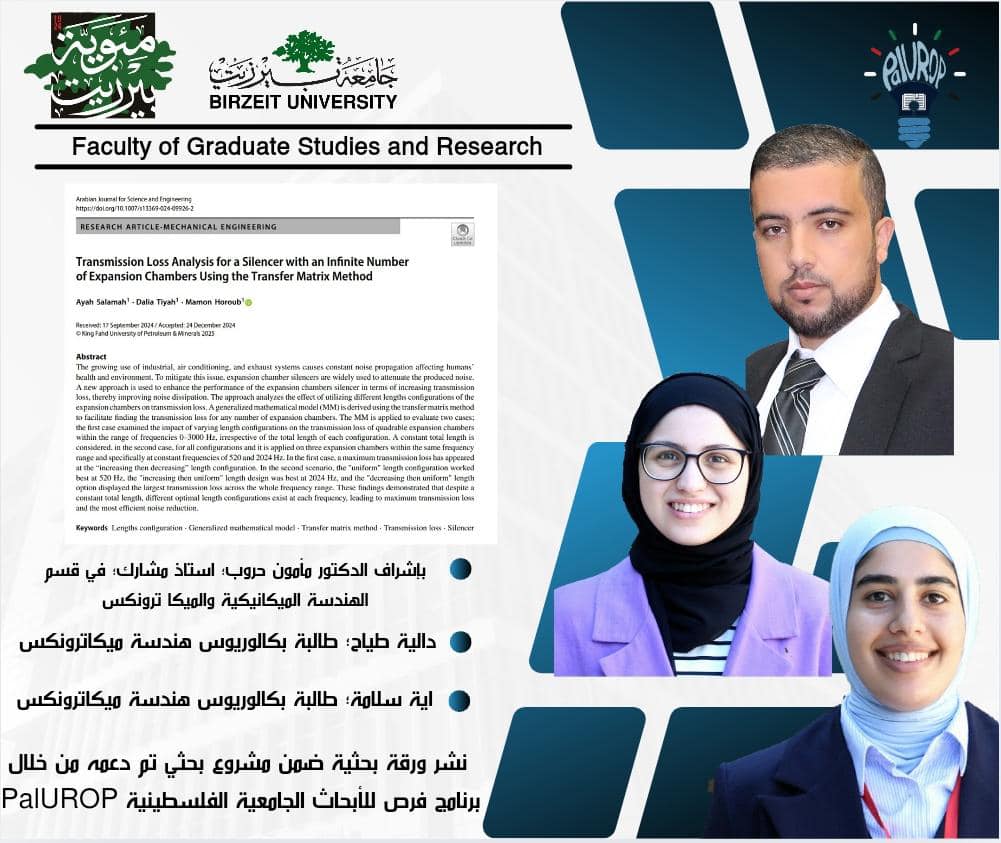Article published! Transmission Loss Analysis for a Silencer with an Infinite Number of Expansion Chambers Using the Transfer Matrix Method
📅 2025-01-04
The growing use of industrial, air conditioning, and exhaust systems causes constant noise propagation affecting humans’ health and environment. To mitigate this issue, expansion chamber silencers are widely used to attenuate the produced noise. A new approach is used to enhance the performance of the expansion chambers silencer in terms of increasing transmission loss, thereby improving noise dissipation. The approach analyzes the effect of utilizing different lengths configurations of the expansion chambers on transmission loss. A generalized mathematical model (MM) is derived using the transfer matrix method to facilitate finding the transmission loss for any number of expansion chambers. The MM is applied to evaluate two cases; the first case examined the impact of varying length configurations on the transmission loss of quadrable expansion chambers within the range of frequencies 0–3000 Hz, irrespective of the total length of each configuration. A constant total length is considered, in the second case, for all configurations and it is applied on three expansion chambers within the same frequency range and specifically at constant frequencies of 520 and 2024 Hz. In the first case, a maximum transmission loss has appeared at the “increasing then decreasing” length configuration. In the second scenario, the "uniform" length configuration worked best at 520 Hz, the "increasing then uniform" length design was best at 2024 Hz, and the "decreasing then uniform" length option displayed the largest transmission loss across the whole frequency range. These findings demonstrated that despite a constant total length, different optimal length configurations exist at each frequency, leading to maximum transmission loss and the most efficient noise reduction. https://link.springer.com/article/10.1007/s13369-024-09926-2?fromPaywallRec=true








